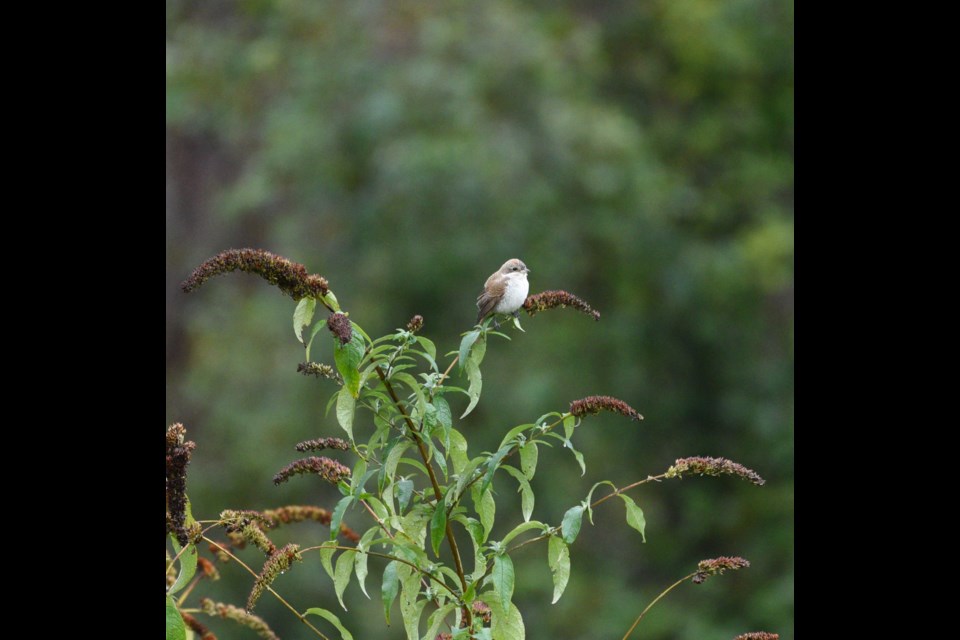Right now is peak time for migratory birds to be arriving in the qathet region, many flying thousands of kilometres from Central and South America.
According to the Cornell Lab of Ornithology, the majority of migratory birds fly at night. Species that commonly make this journey in the dark include sparrows, warblers, orioles, thrushes, and ducks, just to name a few examples.
Many birders are documenting what they see out in the field right now, on an app called eBird (created by Cornell Lab of Ornithology), but it can also be used any time of year.
The Peak asked two avid birders about bird migration at this time of year, as well as the health of our travelling feathered friends on the Sunshine Coast: qathet-based birder Pierre Geoffray and southern Sunshine Coast resident Tony Greenfield, known as “Mr. Birder”.
"Migrants are arriving, and have been for weeks now, from wherever they winter and they're all singing, and the males are all in their best plumage," said Greenfield. "There's an estimated four billion birds crossing the Canada/US border in the springtime."
Greenfield said when it comes to looking at the big picture of bird populations, it's extremely complex.
"Some species are increasing and some are decreasing, and the decrease is particularly noted by the experts among the aerial insectivores, or insect eating birds," said Greenfield. "Birds are dependent upon those insect populations, so things like insecticides, herbicides are not a good thing."
He said a lot of these impacts are occuring in the tropics in the winter due to pesticide usage to kill insects.
Geoffray has been a birder and bird enthusiast for close to 45 years.
"I studied as a hobby, and I became a bird bander for a while," said Geoffray. "The bird community in Powell River is quite small."
He said he is seeing or hearing a new arrival from South and Central America, and the southern US, every day.
"I've been birding at the Wildwood Bluffs for 25 years now; it has the most diversity,” said Geoffray. "There are probably 187 species just on the bluffs. There are all kinds of birds, but mostly songbirds, like this week, we are at the peak migration for warblers, for instance."
Geoffray uses eBird to track data and report what types of birds he is seeing and where, a kind of citizen-scientist data bank that is used worldwide.
"So, the good thing about the app is as soon as you report, it's available for anybody on the site to see," said Geoffray. "Every year I try to see a maximum number of species and this year my goal is 200."
Many people might be surprised to hear that it's possible to see that many birds in the qathet region, but Geoffray said local residents are lucky to live in a time and place with so many birds are around, but he doesn't think future generations will be so lucky, because of climate change and habitat loss.
"Regular migrants are seen pretty much every year,” said Geoffray. “I would say there are 40 species of those, and then you have what we call the rarities, such as the Nashville warbler.”
He said he quite likes the singing birds and being able to recognize birdsong.
"What fascinates me with birds is, when you're looking for birds, you actually understand the local environment," said Geoffray. "Seasons are changing constantly and I'm not talking about the four seasons, no, there are changes that can be observed every day when you are out in the bush birding."
Geoffray said he has noticed different types of birds in the region due to humans changing the environment and creating different habitats.
"We have new species in Powell River moving into the region in the last five years," said Geoffray. "We have a colony of Lazuli buntings; that's probably the only colony on the coast that I know of, maybe in the upper coast; they are usually in the interior."
Geoffray said the Wildwood Bluffs are not protected and were bought by a developer.
"It's precious land that, if we lose it, cannot be replaced," he said.
For those who want to get into bird identification, books are good but Geoffray suggests using the Merlin app, which was also created by folks at Cornell Lab of Ornithology.
"Years ago, I used to carry bird books, and it was more difficult to learn bird songs," said Geoffray. "The sound identification tool is very cool; it listens and then it tells you eventually what's calling, and it's becoming more and more accurate."
Greenfield, who lives in Halfmoon Bay, said there are three or four prime locations on the southern Sunshine Coast to see birds, depending on the time of year.
"Any estuary or sandspit, or even any wetland, is usually a good place to go to," said Greenfield. "I bird all the time. Where I am, outside the city, I see 30 species of birds just in my garden here."
Join the Peak’s email list for the top headlines right in your inbox Monday to Friday.




